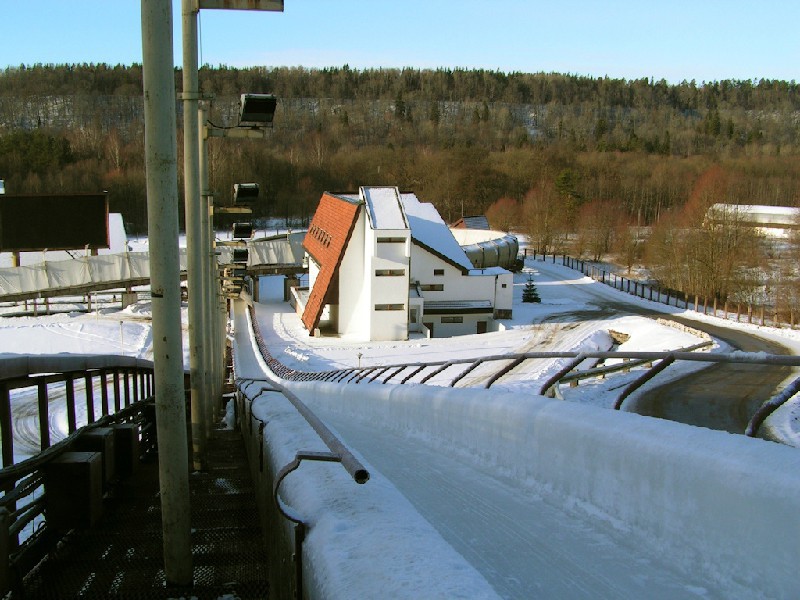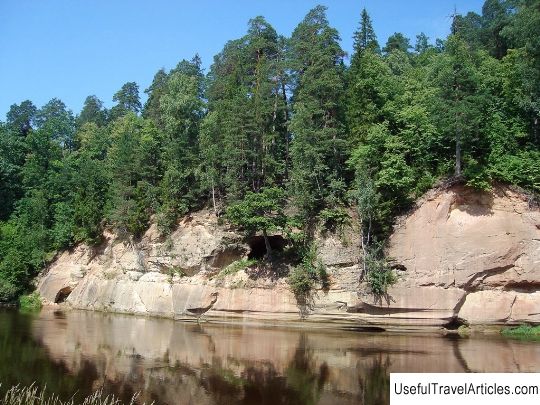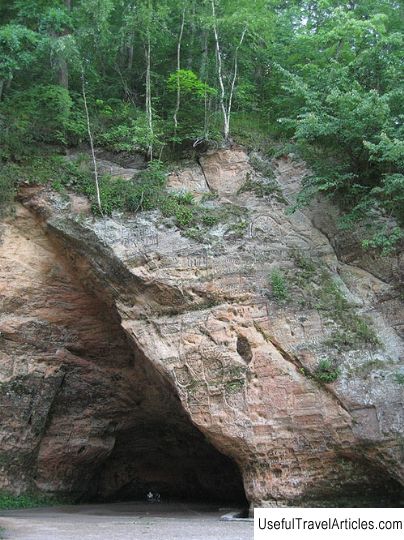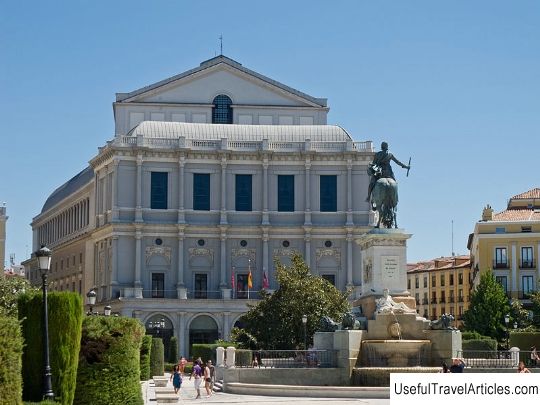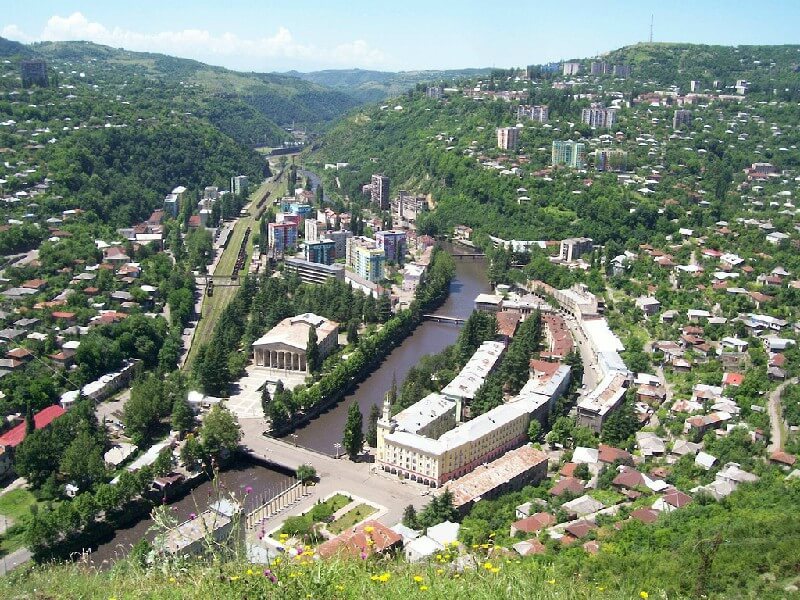Turaidas pils description and photos - Latvia: Sigulda
Rating: 8,2/10 (2905 votes) 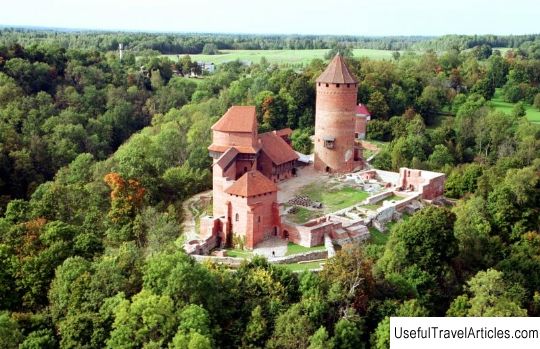
Turaidas pils description and photos - Latvia: Sigulda. Detailed information about the attraction. Description, photographs and a map showing the nearest significant objects. The name in English is Turaidas pils. Photo and descriptionTuraida Castle is located in the city of Sigulda, 50 km north-east of the capital of Latvia. The Turaida Museum-Reserve covers an area of 41 hectares and is located on the right bank of the Gauya River. There are 37 historical buildings on the territory of the reserve. The Turaida Museum-Reserve is one of the most popular museum complexes in Latvia, according to statistics, about 170 thousand tourists visit it annually. The castle was founded in 1214. Bishop Philip founded the Turaida Castle at the direction of the Bishop of Riga Bukskhevden. Upon completion of the construction, the castle was named "Fredeland", which translated from German means "Peaceful land". However, this name did not take root, and the name "Turaida" has survived to this day, which translated from the language of the ancient Livs meant "Divine Garden". For several centuries, Turaida Castle has retained its strategic importance. However, in 1776, after a fire, the fortress was almost completely burned down. At the beginning of the 19th century, an estate was built in the courtyard of a medieval castle. Then they built residential buildings, as well as barns, stables and other outbuildings. In 1924, the ruins of Turaida Castle were added to the list of historical buildings protected by the state. The restoration of the fortress began only after the end of the Second World War, thus, restoration began almost 200 years after the destruction of the castle in a fire. So, repair and restoration work began in 1953, the main tower of the Turaida Castle was restored first ... In 1974, large-scale archaeological excavations and scientific research began on the territory of the fortress. Since 1976. As a result of archaeological excavations, about 5000 ancient finds were discovered, the most interesting of which were the discovered ancient stoves, a bath with a well, a brewery, coins, etc. An interesting find was the already mentioned stoves, which heated fortress. Warm air from the furnaces rose through the voids made in the brickwork, then it spread along the walls and under the floors of the castle, thus perfectly heating the fortress. It is interesting that a similar principle of heating was used in baths in Ancient Rome. The result of the excavations carried out at that time, in addition to the finds themselves, was about 1000 pages of text, which described the found exhibits, in addition, the participants in the excavations made about 500 schemes and plans and made about 7000 photographs. The reconstructed main tower of the Turaida Fortress, which is 26 meters high, is today used as an observation deck, from which a magnificent view of the surroundings opens, which was named Latvian Switzerland for its beauty. You can climb to the observation deck through very narrow and low passages with stone steps. The height of the passages is just over one and a half meters, and the width is only half a meter. In addition to the Observation Bath, other objects of the Turaida Fortress were also restored: the fortress walls, the Semicircular and North Towers, and the South Tower. Since 1962, an exposition of the museum-reserve has been located in the restored utility building. Archaeological excavations, begun in the middle of the last century, do not stop today. Therefore, new exhibits are constantly replenishing the museum fund. Turaida Castle is one of the most popular tourist attractions in Latvia. Concerts of ancient and modern music are constantly held here, as well as all kinds of festivals, exhibitions and other cultural events. Craftsmen work in the courtyard of the castle. The Legend of the Turaida rose is associated with the castle. According to legend, in 1601, Swedish troops captured the castle. After the battle, the palace clerk Greif found an emaciated girl among the dead. He brought her home and pledged to raise her. It happened in May, so he decided to call the girl Maya. Over the years, Maya became so beautiful that they began to call her the Turaida Rose. On the other bank of the Gauja, there lived her fiance, the gardener of the Sigulda castle, Viktor Hejel. In the evenings Maya and Victor met in Gutman's cave. Victor to the left of this cave dug another small one. In anticipation of meeting his bride, he decorated the small cave with flowers. Today this cave is named after Victor. The beauty of Maya was carried away by one of the mercenaries of the manager of the Turaida castle, Adam Yakubovsky, whom the manager was going to dismiss soon. The Turaida Rose rejected all advances and offers of Adam. Then Adam decided to take revenge on Maya and take her by force. In this he was assisted by his friend Peteris Skudritis. In August 1620, Maya received an invitation (allegedly from Victor) about an urgent meeting in a cave. Arriving at the meeting, Maya saw Yakubovsky and Skudritis and realized that she had been deceived. Then she shouted, `` Stop! Now you will see for yourself the strength of the scarf. I'll tie it. The sword is with you chop with all your might and you won't harm me. '' Adam struck with a sword on Maya's neck covered with a handkerchief. Blood poured out immediately, the girl fell without even crying out. Adam realized that he was a "terrible beast" and fled deep into the forest. After some time, Skudritis found Adam in the forest, hanging in the sling of his sword. Skudritis and Adam thought that the handkerchief had some kind of magical power, so none of them expected such an outcome, and only then Skudritis realized that Maya decided to do this because she believed that it was better to die than to lose honor. That evening, Victor came to the cave to meet with Maya and found her bloody body. Victor was blamed for Maya's death, as a gardener's ax was found in the cave. The judges decided to beat a confession out of Victor by torture, from which he was saved by the testimony of Skudritis. Peteris Skudritis was haunted by the crime, so he came to court and told everything. The case was solved. Gardener Victor and clerk Greif insisted on punishing Peteris so as not to desecrate Maya's memory with blood, moreover, they did not consider him the direct culprit of the crime. Maya's remains were buried with all the honors, Victor personally established a cross on her grave, and after that he left the country, since a broken heart could not find peace here. The body of Yakubovsky's killer was buried in a swamp. Skudritis spent 4 months in prison, during which time he deeply repented, after which he was expelled from the country. The legend of the Turaida Rose was introduced into circulation by the participant of the Vidzeme court court Magnus von Wolffeld. The found archival documents of the Vidzeme court court indicate that the legend is based on real events. Although the veracity of the legend of the Turaida Rose has been repeatedly challenged.                  We also recommend reading Garden of living tropical butterflies ”Mindo” description and photo - Russia - St. Petersburg: St. Petersburg Topic: Turaidas pils description and photos - Latvia: Sigulda. |
